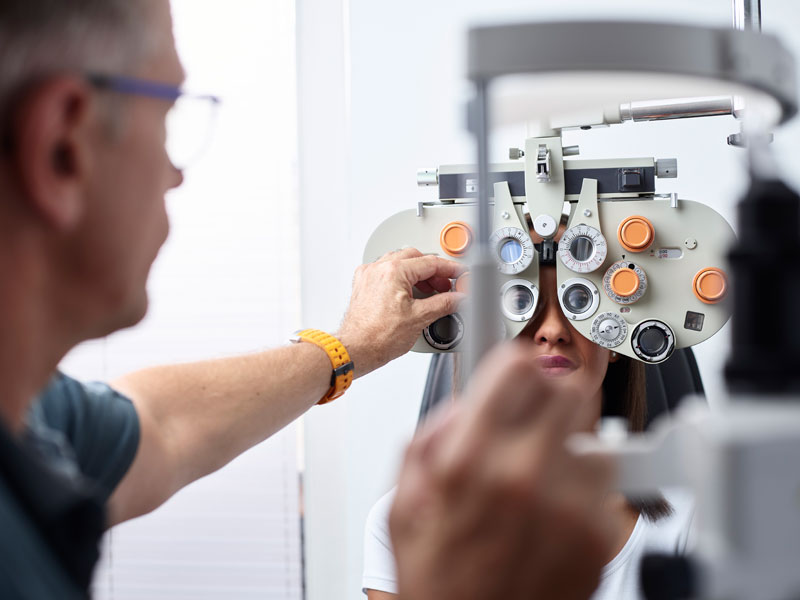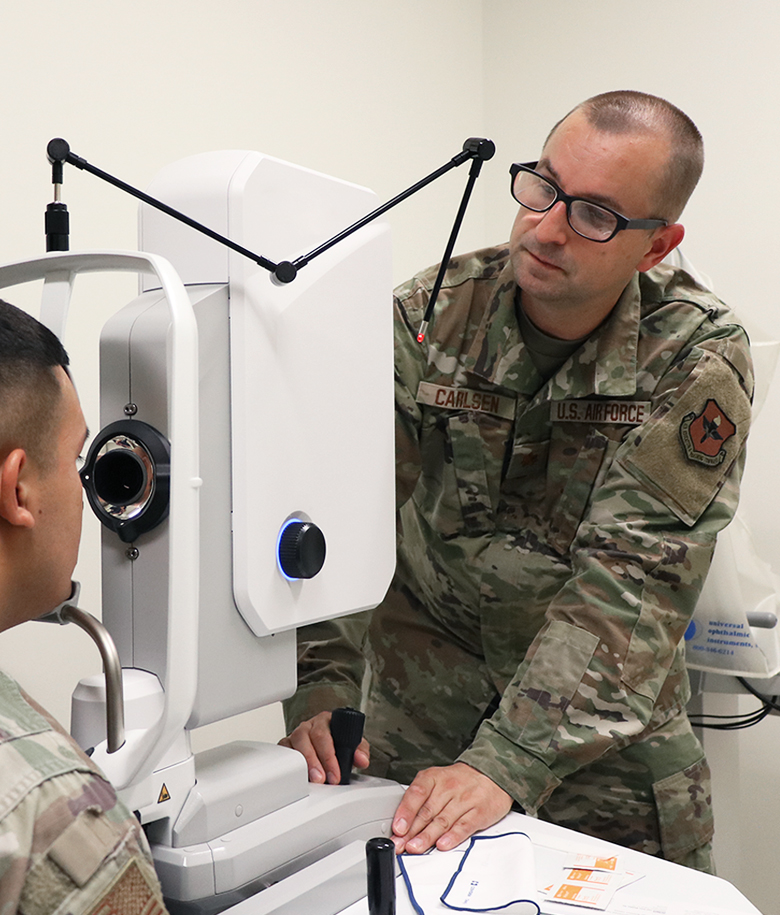The Value of Regular Examinations with an Eye Doctor Optometrist
The Value of Regular Examinations with an Eye Doctor Optometrist
Blog Article
Exploring the Latest Technological Developments in Optometry and What They Mean for Eye Doctors
In the ever-evolving field of optometry, current technological developments are improving exactly how practitioners approach eye treatment. From the precision of Optical Coherence Tomography to the nuanced insights provided by AI-driven analysis devices, these advancements are establishing brand-new criteria in person assessment and treatment. Teleoptometry is positioned to redefine access, making certain that competence goes beyond geographical constraints. As these developments permeate the method, optometrists are confronted with the difficulty of accepting these tools to boost person outcomes. Yet, the inquiry continues to be: exactly how will these technical changes redefine the roles and obligations within the profession?
Technologies in Diagnostic Equipment
Advancing the field of optometry, developments in analysis tools have actually changed the method eye care specialists assess and detect ocular conditions and visual disabilities. The past years has witnessed considerable technical innovations, allowing even more detailed and exact examinations.
Another trick innovation is the introduction of innovative corneal topography systems, which map the surface area curvature of the cornea with precision. These tools are specifically beneficial for fitting contact lenses and detecting corneal disorders. Electronic retinal imaging has actually transformed typical ophthalmoscopy, supplying comprehensive, scenic views of the retina that assist in complete aesthetic examinations.
The growth of wavefront aberrometry has actually additionally been crucial, making it possible for the analysis of refractive mistakes with unequaled accuracy (Eye Doctor). This innovation helps in customizing restorative lenses and boosting medical results for refractive surgeries. Collectively, these analysis innovations encourage eye doctors to supply premium individual care, making sure early treatment and customized treatment strategies, eventually improving visual wellness results
AI in Individual Administration
Structure on the foundation of cutting-edge analysis devices, the unification of synthetic intelligence (AI) in patient administration represents a transformative jump for optometry. AI systems are increasingly employed to boost efficiency, precision, and customization in individual care. By evaluating large amounts of data, AI can recognize patterns and anticipate possible ocular problems, making it possible for optometrists to customize treatments much more successfully. This ability is important in taking care of persistent eye diseases such as glaucoma and diabetic person retinopathy, where very early discovery and continual tracking are essential.
Moreover, AI-driven systems promote structured person communications and management procedures. Automated scheduling, digital assessments, and individualized follow-up plans not just improve person fulfillment but additionally optimize time management for professionals. These systems can triage patients based on the necessity of their problems, guaranteeing that those in critical need receive prompt interest.
Furthermore, AI improves decision-making by giving eye doctors with evidence-based suggestions and treatment paths. By incorporating data from electronic wellness documents, AI tools supply insights that inform medical decisions, lowering the threat of mistakes and improving patient outcomes. As AI proceeds to evolve, its role in person administration will likely increase, reshaping the landscape of optometric care.
Developments in Retinal Imaging
In the world of optometry, retinal imaging has seen exceptional technical advancements that are improving diagnostic capacities and client care. Innovations such as Optical Comprehensibility Tomography (OCT) and fundus photography have changed how optometrists examine the retina and imagine. OCT, particularly, gives high-resolution, cross-sectional pictures of the retina, allowing for the thorough assessment of its layers. This capability is indispensable for very early discovery and monitoring of problems like glaucoma, diabetic retinopathy, and age-related macular deterioration.
Enhanced imaging modalities like OCT angiography are further refining diagnostic precision. Opticore Optometry. Such developments help with the recognition of min retinal changes that could indicate condition progression.
Moreover, innovations in fabricated intelligence are boosting retinal imaging by making it possible for automatic evaluation of big datasets. These systems help eye doctors in identifying patterns indicative of pathology, consequently boosting analysis accuracy and efficiency. Collectively, these technologies are changing retinal imaging into a foundation of modern eye care, improving end results and expanding therapeutic possibilities.
Teleoptometry's Expanding Duty
Teleoptometry is progressively becoming an important component of eye care, driven by developments in electronic communication and analysis tools. This is especially useful in underserved and country locations where access to specialized eye care is usually limited.
The integration of artificial knowledge (AI) more enhances teleoptometry, allowing the analysis of visual data and helping in the discovery of ocular conditions such as glaucoma and diabetic person retinopathy. AI-powered formulas can read rapidly analyze complicated imaging information, giving optometrists with useful insights that boost scientific decision-making.
In addition, teleoptometry sustains continuity of treatment via seamless combination with digital wellness documents (EHRs), allowing eye doctors to preserve comprehensive individual backgrounds. When seeking advice from with different professionals., this makes certain that patients obtain constant and personalized treatment also.
Regardless of these benefits, obstacles remain, including ensuring data security and taking care of individual assumptions. However, teleoptometry represents a substantial stride in the direction of even more easily accessible, reliable, and patient-centered eye care. As innovation evolves, its function is positioned to expand better.

Future Trends in Eye Care
A myriad of ingenious trends is readied to reshape the future of eye treatment, driven by technological innovations and the evolving requirements of people. One significant fad is the assimilation of expert system (AI) in diagnostics, which assures to improve the accuracy and effectiveness of eye examinations. AI formulas can analyze large quantities of data from retinal photos, potentially discovering conditions like diabetic person retinopathy and glaucoma earlier than typical techniques.
Moreover, tailored medication is gaining grip in optometry, with hereditary testing notifying customized treatment plans. This method aims to maximize patient end results by customizing interventions to individual hereditary accounts. Wearable technology, such as clever contact lenses, is additionally imminent, providing real-time surveillance of intraocular pressure or sugar degrees, hence offering continuous understandings right into systemic and eye health and wellness.
The fostering of augmented truth (AR) and digital truth (VR) in training and patient education is another arising fad. These innovations supply immersive experiences that can enhance understanding and skills both for optometrists and individuals. As these fads progress, eye doctors have to stay abreast of technological innovations to provide cutting-edge treatment, ensuring improved person results and satisfaction in the vibrant landscape of eye treatment.
Verdict

Collectively, these diagnostic developments empower browse around these guys eye doctors to supply superior individual care, ensuring very early intervention and tailored therapy techniques, inevitably enhancing visual health end results.

As these technologies continue to develop, eye doctors need to adjust and integrate them into technique, inevitably enhancing process effectiveness and raising the criterion of eye treatment delivered to people.
Report this page